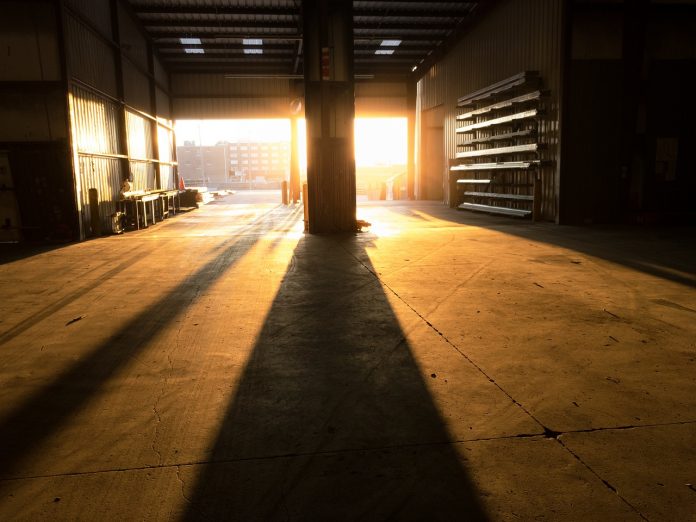When you hear the word warehouse, the first thing that comes to mind certainly isn’t danger. Still, warehouses are good examples of a dangerous workplace. This is why managers everywhere are looking for ways to reduce the chance of an accident happening on their work floor. The three main focuses of safety in a warehouse are forklifts, warehouse design, and communication. Here are some ways you can improve on all of these aspects and impact productivity simultaneously.
1. Worker training
Tens of thousands of injuries happen in warehouses every year, from forklifts alone. Forklifts really are pretty dangerous tools to work with, but you can’t put all the blame on the equipment. The real danger comes from human error. Forklift drivers move dozens of tons of heavy machinery all around the warehouse, with loads that also weigh a large amount.
There’s always some degree of risk when you’re working with heavy machinery. A wrong turn or dropped cargo can spell disaster on the work floor and cost you thousands of dollars, or it could cause worker injury and death. Keep your operators safe and your company from incurring loss through personal injury claims. For example, you can trust Lakeport Metalcraft Inc. to provide you with a reliable and durable rear guard for your company’s stand up reach truck rear post. There are many companies out there that ensure safe products are provided. Do thorough research before purchasing any machinery your employees will use.
You can’t go without forklifts, so the solution is obviously to somehow reduce human error. Humans aren’t perfect, but they can improve on their skills. Get your drivers proper training and re-training at regular intervals. Experienced drivers aren’t let off the hook either. Human memory is fickle and even experts need a refresher once in a while.
2. Loading dock safety
You might think a majority of accidents happen while the forklift is transporting goods, but this isn’t the case. Most of the danger comes from the main purpose of a forklift: loading and unloading. All that weight has to be moved perfectly from a shelf to the forklift, with the opposite happening on the loading dock. Picking things up is easy, it’s letting them down carefully that presents a problem.
Lots of things can go wrong when unloading heavy equipment. The truck it’s being loaded on could start sooner than anticipated, leading to what is called an “early departure”. The weight being carried can’t be too heavy for a truck to transport. If you stretch the limits of the truck it could tip at the nose once you unload the weight. There are some ways to mitigate this. You can add hooks that prevent things from moving at the wrong time, or you can add wheel locks that won’t let the van or truck slip away from the dock. Anything that increases safety should be considered.
3. Proper lighting
Visibility should be one of the main things you focus on in the warehouse. One of the main causes of accidents is a lack of visibility when handling machinery. There’s no reason your employees should work in pitch black conditions. Some warehouses don’t close up shop when the sun goes down, and they are especially prone to accidents at night. In order to improve your lighting situation, you need to take care of several things.
First of all, getting the right kind of lights is important. You’re not going to do anything with low power lightbulbs that hardly shine. Large spaces need lots of lights. There are plenty of corners in a warehouse and you have to make sure you have them all covered. Get into every nook, cranny and difficult to reach spots. If your warehouse has an external part, consider mounting some light fixtures on poles. They will be especially useful because vehicles are constantly going in and out of this area.
4. The right tools
A craftsman is only as good as the tools he uses. Your workers aren’t necessarily craftsmen, but you get the picture. You can only do so much with what you are given. If a piece of machinery isn’t up to the task, no amount of skill will compensate for it. Newer and more efficient models might seem like a costly expenditure, but you should think of it as an investment for the future. Things that run smoothly and don’t break down too often are actually more efficient in the long run.
If anything needs to be kept up-to-date it’s the forklifts in the warehouse. Considering how often they’re used and how dangerous they are, no expense should be spared when you invest in forklift sale and hire. With the proper tools at their side, your workers will be as efficient as ever, with fewer accidents to boot!
5. Warehouse traffic
The main reason forklifts are so dangerous is that they are a mobile piece of equipment. Heavy machinery is usually scary in its own right, giving it wheels makes it even more of a nightmare. A forklift can pose a threat to just about anything in a warehouse while it’s moving. Stationary machines, walls, and even other forklifts aren’t out of the question. With the weight that a forklift carries, you wouldn’t want to be on the receiving end of a crash with one.
Drivers have to be aware of their surroundings at all times. Before mobilizing, they should always do a three-sixty-degree assessment of their surroundings. Most of all, drivers should keep their eyes on the road and make sure there are no distractions that will prevent them from driving safely. Spatial awareness is important, but the hardware has to cooperate as well. A lot of modern forklifts have sound systems and lights to signal anyone on the work floor that the forklift is getting a little bit too close. Fewer collisions means fewer repairs, and that means fewer headaches for the warehouse manager.
Conclusion
In conclusion, warehouses aren’t the safest places on earth, but this doesn’t mean you shouldn’t invest in making them as safe as they can be. Not only will this reduce the number of worker injuries you get, but you’ll also find that fewer accidents means you get an improved bottom line down the road. Fewer worker injuries also means dealing with fewer workers’ compensation claims, and those can be a quite a pain as well. All in all, safety has proven to be one of the best investments a business can make.
Find a Home-Based Business to Start-Up >>> Hundreds of Business Listings.



















































